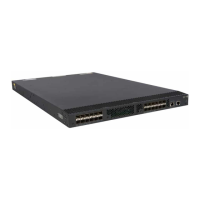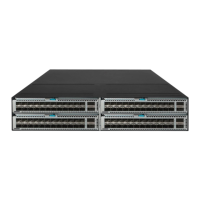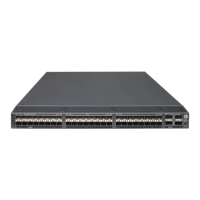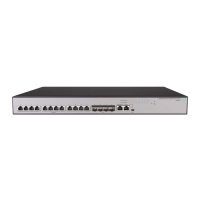16
Usage guidelines
You can use this command to check whether proxy ARP is enabled or disabled.
If an interface is specified, this command displays proxy ARP status for the specified interface.
If no interface is specified, this command displays proxy ARP status for all interfaces.
Examples
# Display the proxy ARP status on VLAN-interface 1.
<Sysname> display proxy-arp interface Vlan-interface 1
Interface Vlan-interface1
Proxy ARP status: disabled
Related commands
proxy-arp enable
local-proxy-arp enable
Use local-proxy-arp enable to enable local proxy ARP.
Use undo local-proxy-arp enable to disable local proxy ARP.
Syntax
local-proxy-arp enable [ ip-range startIP to endIP ]
undo local-proxy-arp enable
Default
Local proxy ARP is disabled.
Views
VLAN interface view, Layer 3 Ethernet interface view, Layer 3 Ethernet subinterface view, Layer 3
aggregate interface view, Layer 3 aggregate subinterface view
Predefined user roles
network-admin
Parameters
ip-range startIP to endIP: Specifies the IP address range for which local proxy ARP is enabled. The
start IP address must be lower than or equal to the end IP address.
Usage guidelines
Proxy ARP enables a device on a network to answer ARP requests for an IP address not on that
network. With proxy ARP, hosts in different broadcast domains can communicate with each other as
they do on the same network.
Proxy ARP includes common proxy ARP and local proxy ARP.
Common proxy ARP allows communication between hosts that connect to different Layer 3
interfaces and reside in different broadcast domains.
Local proxy ARP allows communication between hosts that connect to the same Layer 3 interface
and reside in different broadcast domains.
Only one IP address range can be specified by using the ip-range keyword on an interface.
Examples
# Enable local proxy ARP on VLAN-interface 2.
<Sysname> system-view

